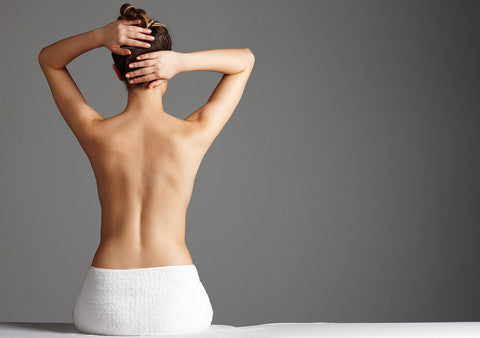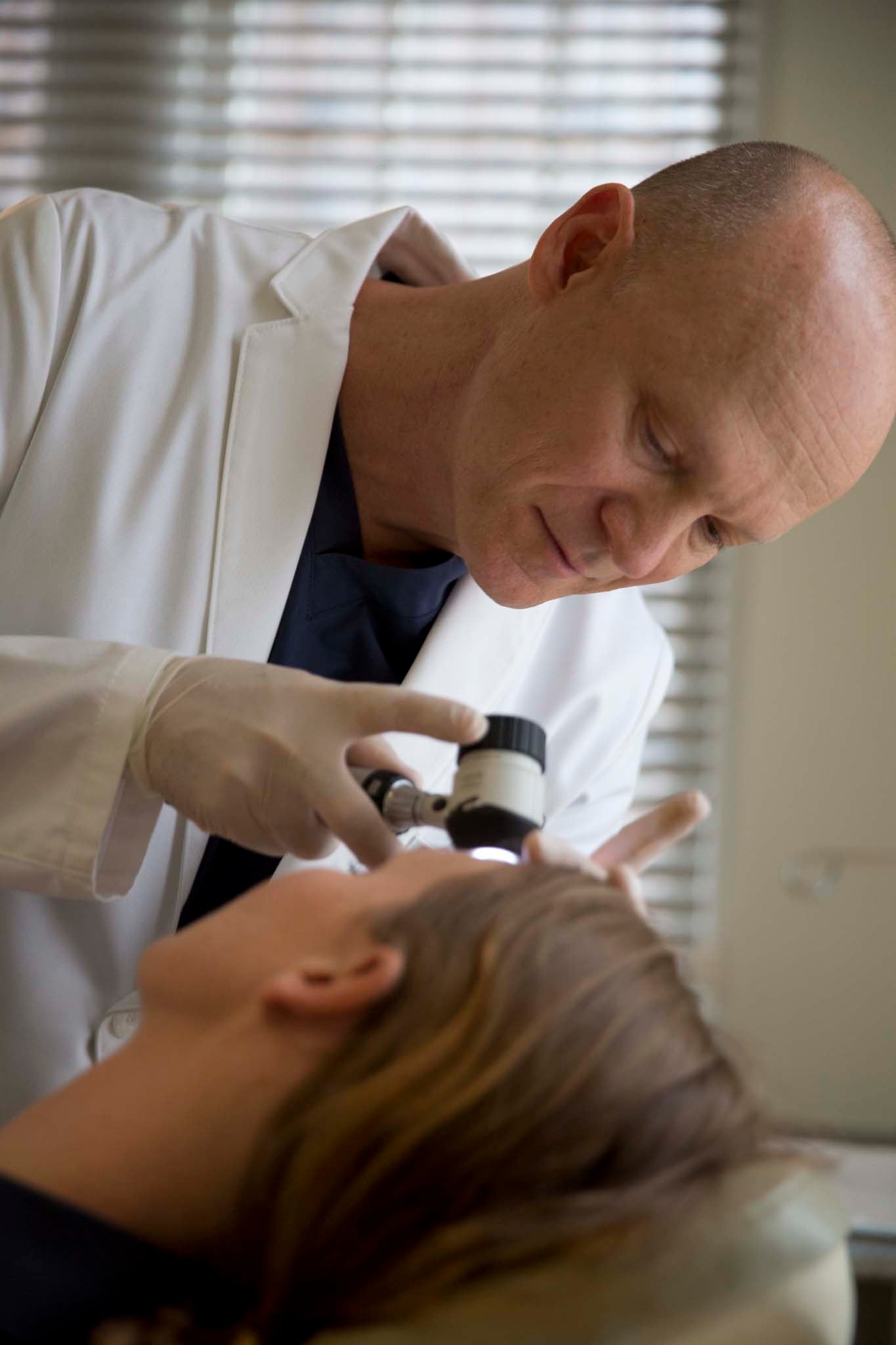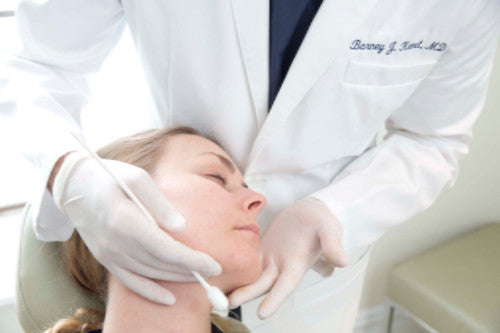Skin Examination



Basal Cell Carcinoma, the most common type of skin cancer is the least dangerous. Nevertheless, prompt and complete removal of the cancerous cells is essential to maintain healthy skin. Basal cell carcinoma does not tend to spread to other areas of the body (metastasize), but can damage nearby skin. Sun exposure is the leading cause of basal cell carcinoma. People with fair skin and eyes, and those who have a family history of basal cell carcinoma are known to be at an increased risk.
Squamous Cell Carcinoma (SCC) is the second most common type of skin cancer. Most cases of SCC are caused by exposure to the sun’s harmful ultraviolet (UV) rays. The risk of developing SCC increases when a person also has one or more of these factors:
The risk of developing SCC also increases with age because each exposure to harmful UV rays causes more damage to the skin. As this damage accumulates, the risk of developing skin cancer grows.
Melanoma, the most serious form of skin cancer, has the potential to spread to other parts of the body and cause advanced health risks. Detected early, however, it is very curable.
Symptoms to look for include a change in the size, shape, or color of an existing mole, or any new mole.
Men most commonly develop melanoma on the trunk, particularly the back. Women develop melanoma commonly on the legs or arms. Melanoma is completely curable in its early stages when it is limited to the top layer of the skin. It is therefore essential to examine your skin and have any changing, growing or darkening mole checked by a dermatologist.
Limiting sun exposure, using sunblock, and wearing protective clothing remain the cornerstones for prevention of all skin cancers.

Acne, at any age can have a profound affect on self esteem and overall confidence. Dr. Kenet offers patients with acne a comprehensive and holistic approach to combat acne lesions, blackheads, redness and scarring.Topical treatments, laser therapy, oral antibiotics, and injections are offered and customized depending on a variety of personal factors. We work closely with patients who decide to use Accutane to ensure a safe and effective course of treatment.
Actinic Keratosis (AK)Also known as a solar keratosis, an actinic keratosis is a small, rough spot on the skin that results from long-term sun exposure. They occur most frequently in fair-skinned people over the age of 50. AKs can be treated in a number of ways, including cryosurgery (freezing), topical medication, and Fraxel (laser resurfacing).
Brown Spot RemovalBrown spots, age spots or liver spots are the result of aging and sun exposure and are common on the face, hands, and chest. Though typically not dangerous, spots can be unsightly and may contribute to a more aged appearance. Nevertheless, it is important to have spots, freckles and growths examined by a dermatologist to rule out any risk for skin cancer. Lasers are very effective to reduce or eliminate these spots. We also offer chemical peels and other gentle treatments improve in your complexion.
Cryosurgery is the process of using liquid nitrogen to freeze growths on the surface of the skin. It is good for treating warts, actinic keratoses, and other benign growths. During the process, the entire growth as well as a margin of healthy tissue are completely frozen. This process is quick and relatively painless. Frozen lesions generally heal within a week to ten days.
Both men and women experience hair loss, and for many it can be a distressing experience. Hair loss has many different causes, including genetics, hormonal changes, especially peri-and post-menopause, as well as medications. Other triggers include injury to hair follicles through chemotherapy, trauma or stress. While there is no absolute "cure" for typical male pattern baldness, a variety of treatments, including topical Minoxidil, Propecia and nutritional support can slow hair loss.
Hyperhidrosis, or excessive sweating, is typically a chronic condition that develops in adolescence or young adulthood. People with hyperhidrosis produce an amount of sweat exceeding that which is needed to regulate body temperature. The condition can be socially embarrassing. The most common areas which are affected are the underarms and the palms of the hand. Treatment options include prescription strength anti-perspirants (Drysol) and Botox.
Rosacea causes redness in the skin and can also bring on flushing, swelling, acne-like breakouts. A wide variety of treatment options are available, depending on the type of rosacea and its severity.
Scar revision refers to a group of surgical techniques used to reduce the appearance of scars, including keloid scars, acne scars, burn scars, hypertrophic scars, facial scars, and scars caused by injury or previous operations. In the surgery, the scar may be excised (removed). In many cases there is a significant cosmetic improvement.
These common rough brown colored growths arise on the surface of the skin and are easily removed using local numbing. Healing takes five to ten days and excellent results are commonplace.